There’s something genuinely magical about gathering around a backyard fire pit with friends and family. The crackling flames, the warmth, and the stories shared are the source of countless cherished memories. To ensure that your outdoor fires are fun and secure, here are 14 critical safety tips to keep in mind before lighting your backyard fire pit.
1. Check Local Regulations
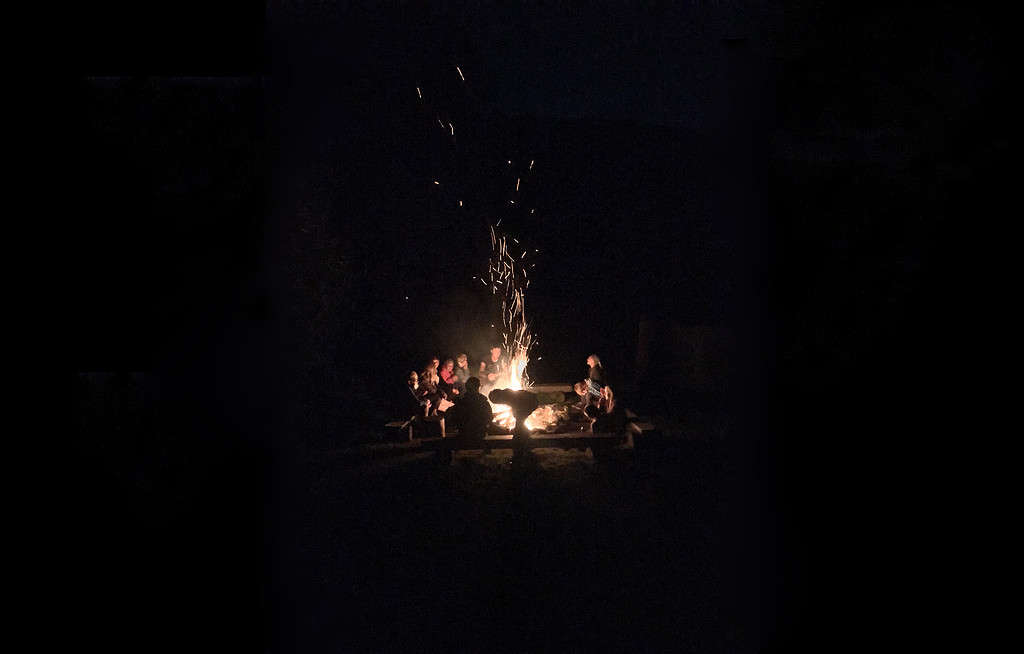
Creating an inviting atmosphere around a fire pit is easy if you follow local safety tips and regulations.
Before you start, check your local regulations regarding open fires. Some areas may have specific rules about when and where you can have a fire pit. Comply with these regulations to avoid fines and ensure safety.
Start by contacting your local municipal government or fire department. They can provide you with information about any fire-related ordinances, permits, or restrictions in your area. Be sure to ask about specific guidelines, including when and where you can have a fire, the size and type of fire pit allowed, and any burn bans that may be in effect during dry or windy conditions. Staying informed and abiding by these regulations ensures your safety and keeps you in compliance with the law.
2. Choose the Right Location
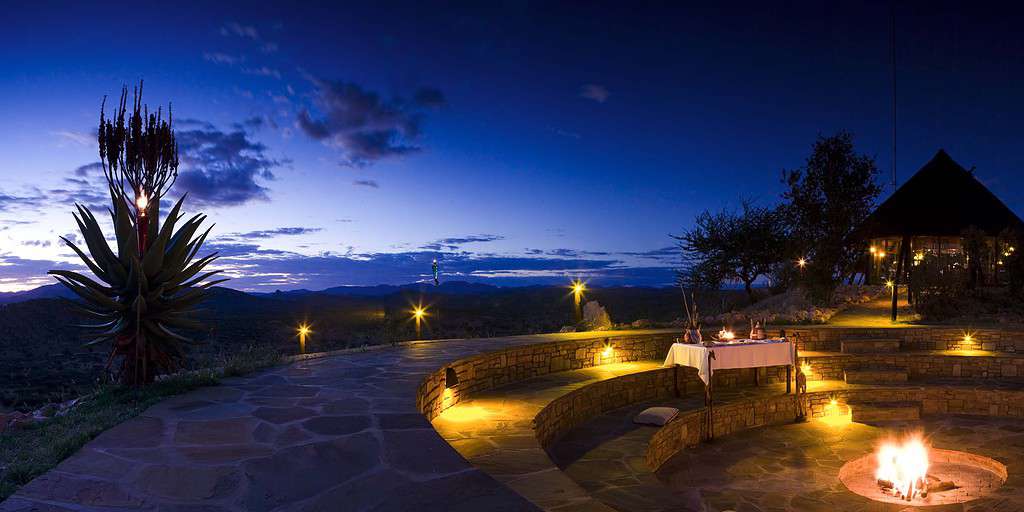
A location without flammable plants and debris is a great spot for a fire pit.
When creating the perfect outdoor haven, choosing the right location for a fire pit is a game-changer. First and foremost, safety should be a top priority – make sure to keep the fire pit at a safe distance from structures, overhanging branches, and flammable materials. Additionally, think about the prevailing wind direction to avoid smoke blowing in your face. A level surface is a must for stability, and you might also want to consider the view from your chosen spot – after all, the location of the fire pit is also about creating a memorable atmosphere. Scout your outdoor space with these tips in mind, and get ready to elevate your evenings with the perfect fire pit location!
3. Use the Right Fire Pit
When it comes to enjoying a backyard fire, the first step is to Invest in a high-quality fire pit specifically designed for safe outdoor use. There are several options available, depending on your space and climate.
For a compact area, go for a sleek and portable fire bowl. If you love a rustic vibe, an open-pit design with a sturdy base is a fantastic choice. Want more versatility? Opt for a chiminea; it offers warmth and is a charming focal point. Gas fire tables provide convenience and complement a modern setting. Whatever you choose, ensure it’s made from durable materials and follow local regulations for safe use. With the perfect fire pit, you’re on your way to cozy nights and warm memories in your backyard.
4. Clear the Area
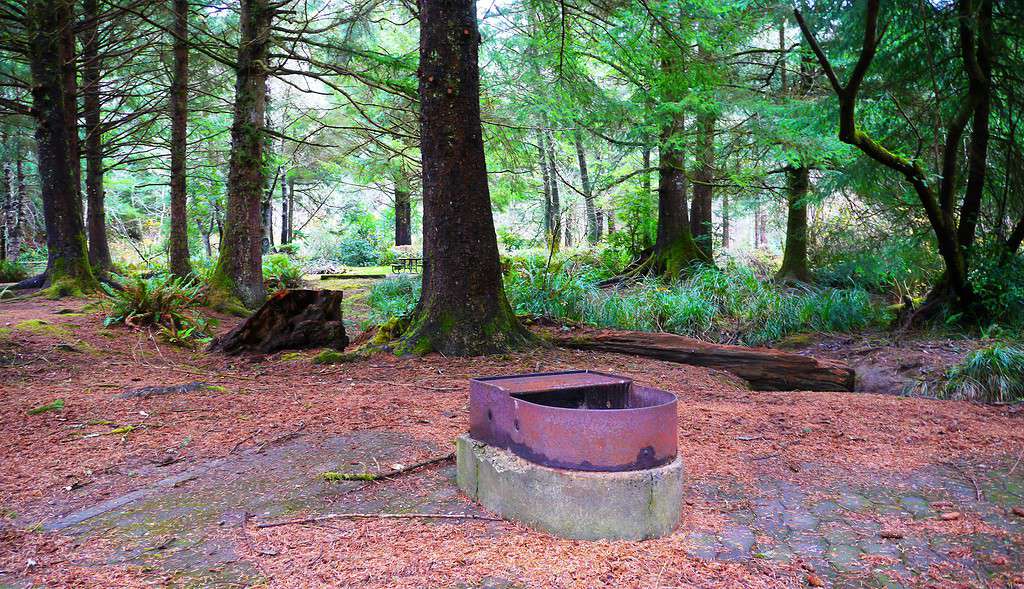
Before lighting a fire, it is important to clear flammable debris away from the fire pit area.
A key step in preparing for an outdoor fire is keeping flammable debris away from your fire pit area. By taking a few minutes to clear the space around your fire pit, you’re not just making sure your evening won’t go up in smoke – you’re also creating a safer environment for you, your loved ones, and your property. It’s as simple as grabbing a rake or some gardening gloves to remove debris, leaves, or other combustible materials from the fire pit area. This will prevent sparks from igniting unintended fires. Clearing the area will keep the flames where they belong – dancing in the fire pit!
5. Dress Appropriately
When dressing for building a fire, it’s essential to opt for non-flammable clothing. Choose snug-fitting, natural fabrics like cotton or wool to minimize the risk of loose, flammable clothing catching fire. Don’t forget to wear closed-toe shoes to protect your feet from hot embers or falling logs. By dressing appropriately, you can enjoy the warmth of your fire while staying safe and comfortable.
6. Gather the Right Tools
Keep supplies, including a fire extinguisher, hose, and bucket of water nearby, to quickly extinguish the fire if needed. Never use gasoline, lighter fluid, or other accelerants to start or revive a fire. These can lead to dangerous flare-ups.
7. Use Dry Firewood
Using dry firewood in your fire pit offers numerous benefits. Firstly, dry firewood ignites easily and burns more efficiently, producing a cleaner and hotter flame. This means you’ll spend less time struggling to start the fire and more time enjoying its warmth and glow. Dry firewood also generates far less smoke and creosote, which not only enhances the comfort of your outdoor gathering but also reduces the environmental impact of the fire. Dry wood also results in fewer sparks and less risk of dangerous flare-ups, making your fire pit experience safer.
8. Build The Fire Using Safe Techniques
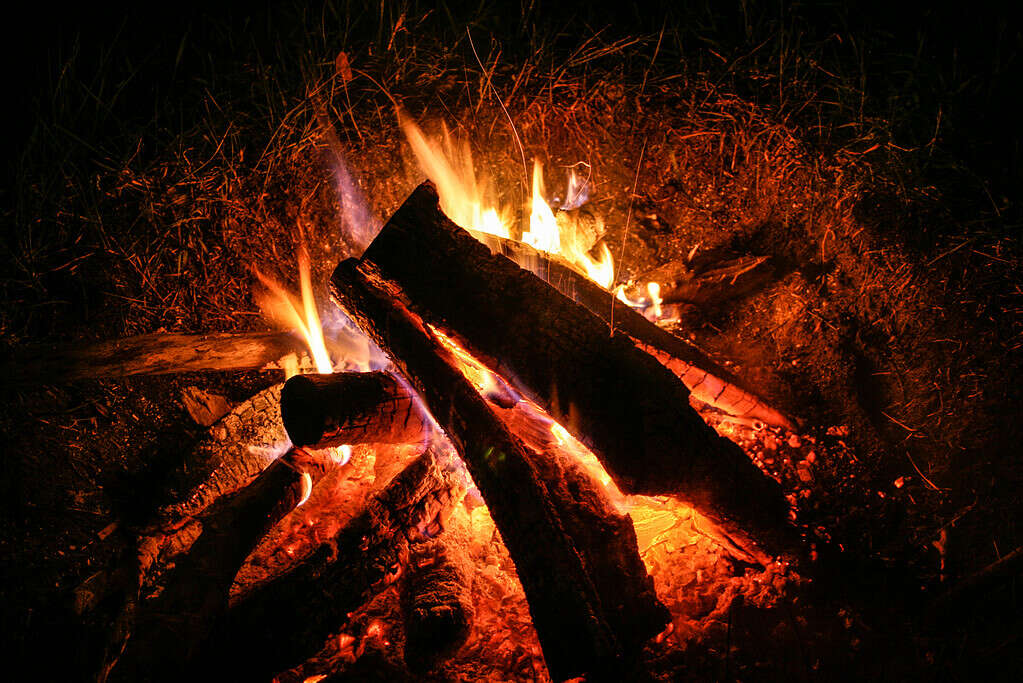
There are several techniques for stacking firewood that allow for good airflow, resulting in a safer fire.
Stack wood in a way that allows for airflow and minimizes pieces that can roll out of the fire and spread flames. Avoid building a fire that’s too large, as it can get out of control quickly. Follow a tried-and-true fire-building method like the teepee or log cabin.
To make a fire with the teepee method:
- Start by placing some small dry twigs or leaves in the center of your fire pit or designated fire area.
- Create a teepee-like structure by leaning kindling sticks against each other over the center, leaving an opening for lighting.
- Gently light the center using a match or lighter.
- As the flames catch and grow, add larger sticks and firewood to the teepee, gradually expanding the structure.

The teepee shape of this fire allows for proper airflow, ensuring a steady and robust fire.
To make a fire using the log cabin method:
- Place two larger logs parallel to each other, leaving a gap between them.
- Stack two smaller logs on top of the first pair, perpendicular to the bottom logs, and repeat this process with smaller logs.
- Alternate the layers until you’ve built a square or rectangular “log cabin” structure.
- Place some tinder or fire-starting materials in the center of the cabin and light it up. As the fire ignites, it’ll steadily catch the surrounding logs, creating a well-balanced blaze. The log cabin design ensures good airflow and can provide hours of cozy, crackling warmth.
9. Don’t Leave the Fire Unattended
Accidents can happen in seconds. A slight breeze or shifting logs can turn a controlled flame into a potential hazard. Preventing a wildfire is a shared responsibility, and one of the simplest and most effective ways to do your part is by never leaving your fire unattended. Whether it’s a campfire, a bonfire, or your backyard fire pit, keeping a watchful eye on the flames is a must. It’s all too easy for sparks to fly or embers to drift, potentially igniting nearby vegetation. By staying by your fire pit, you can monitor the situation, make adjustments as needed, and ensure it’s safely contained.
10. Keep Children and Pets at a Safe Distance
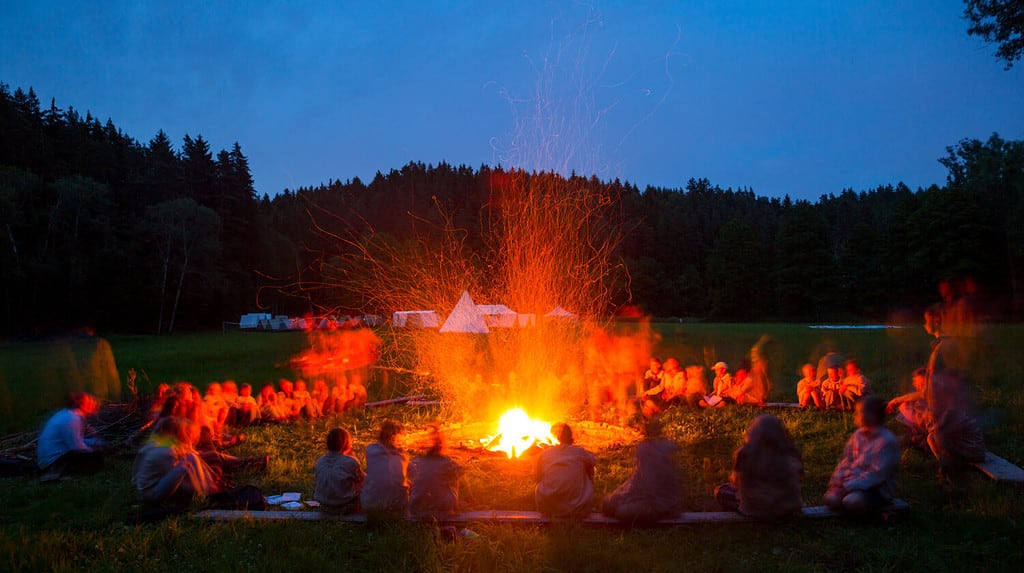
You can create a safe zone around a fire for kids and pets by designating a boundary with seating.
©Vojtech Mucha/Shutterstock.com
Make sure kids and pets stay at a safe distance from the fire pit. Keeping children and pets safe around a fire pit is about setting clear boundaries and being watchful. Designate a safe zone using a physical barrier or marked area and educate kids about staying outside of it. Ensure there are comfy seating options for everyone so they can relax a safe distance away from the flames. While enjoying the fire, be alert and aware of where your kids and pets are. Create a fun and engaging activity for them, like roasting marshmallows or storytelling, while keeping a watchful eye.
11. Don’t Overload the Fire Pit
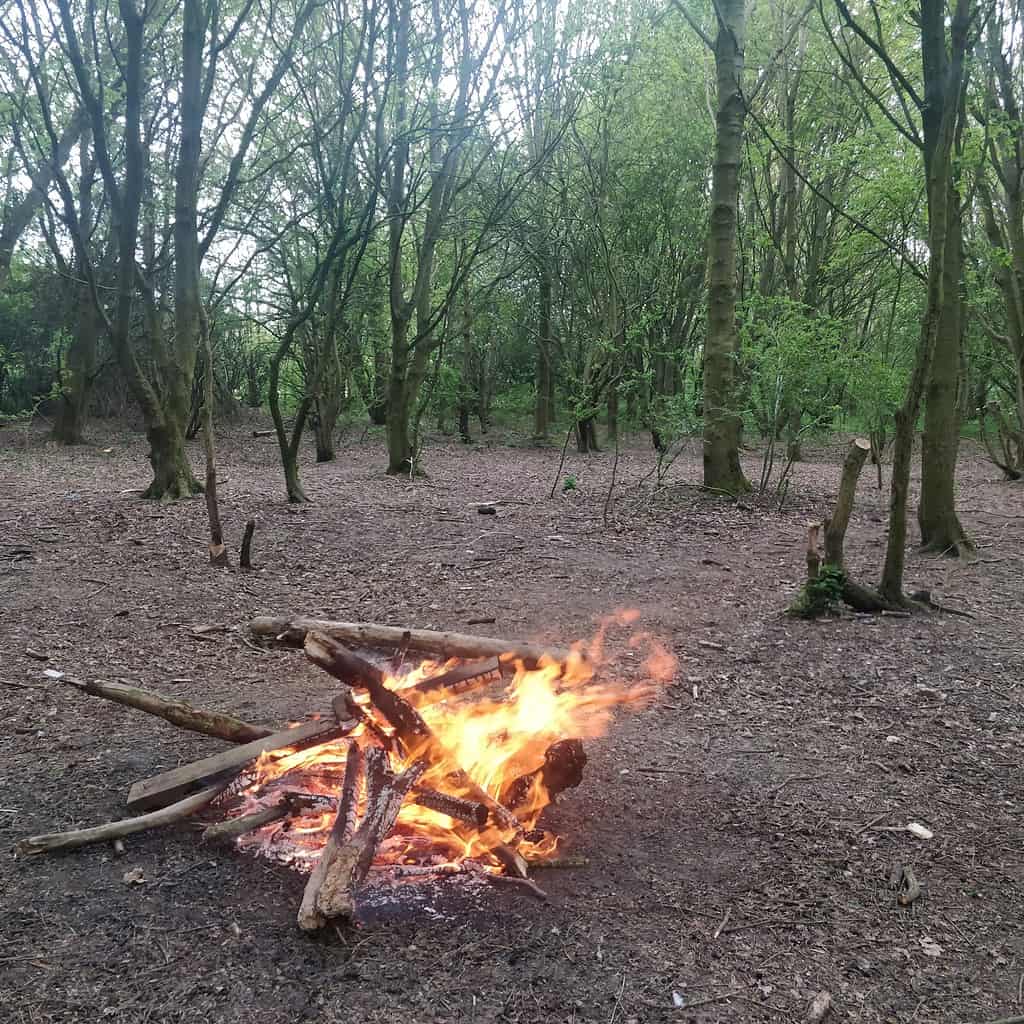
Overloading a fire pit with too much wood can cause embers to escape and pose a fire hazard.
When you add too much wood or other fuel on a fire, it can become uncontrollable, leading to larger flames and higher temperatures. This not only increases the risk of accidental fires spreading to nearby structures or vegetation but also creates a hazardous environment for those gathered around the fire. Excessive fuel consumption can produce an abundance of smoke and embers, potentially causing respiratory issues and sparking unintentional fires. You can minimize the risk of dangerous flames, embers, and smoke by keeping your fire to a moderate size and restricting it to the fire pit boundaries.
12. Be Wary of Wind
Keep an eye on wind conditions. Strong gusts can carry embers and sparks to unintended areas, so it’s essential to be vigilant. Even a gentle breeze can unexpectedly fan the flames, making the fire more difficult to control and potentially sending sparks and embers flying. These airborne fire particles can pose a fire hazard to surrounding structures, plants, or even people, creating a risky situation. To ensure a safe and enjoyable outdoor experience, always be cautious of the wind and take appropriate measures, like placing screens or windbreaks around the fire pit.
13. Practice Safe Extinguishing
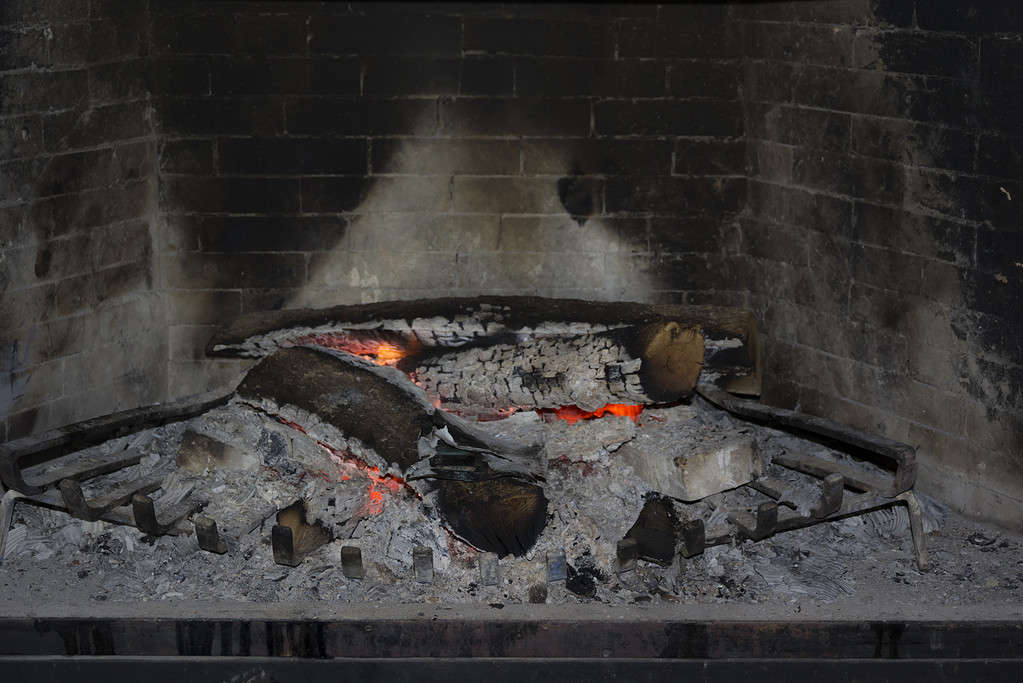
Wait until embers are cool to the touch or extinguish them with sand or water before leaving a fire.
©chetverg/iStock via Getty Images
Safely extinguishing your fire is the perfect ending to a wonderful fire pit gathering. Use a bucket of water or a fire extinguisher for wood fires to douse the flames thoroughly. Stir the ashes to ensure everything is out, and then wait until it’s cool to the touch before leaving. For gas fires, turn the gas supply off at the source and let the flames die down on their own if possible. If it’s necessary to speed things up, use the shutoff valve. Always double-check that the gas is completely off, then safely cover the fire pit.
14. Cover the Fire Pit
Once the embers and ashes in your fire pit are completely cold, dispose of ashes away from combustibles. Metal containers are a good choice for storing ashes. Cover the fire pit when it’s not in use to prevent rainwater or debris from accumulating. This also reduces the temptation for children or animals to play in it.
Enjoying a fire pit in your backyard can provide warmth, relaxation, and cherished memories. By following these 14 critical safety tips, you can ensure that your outdoor fire pit experiences are enjoyable and hazard-free. So gather your loved ones, and light that fire pit with confidence, knowing that you’re doing so responsibly and safely.
Summary of 14 Critical Safety Tips for Your Backyard Fire Pit
| Safety Tip | Description |
|---|---|
| Check Local Regulations | Check local city, county, and state laws regarding open fires. |
| Choose the Right Location | Choose a solid, open area for your fire pit. |
| Use the Right Fire Pit | Depending on your location and climate, choose from options like a portable fire bowl, a metal fire pit, a brick fire pit, a chiminea, or a gas fire table. |
| Clear the Area | Clear the area around the fire pit of any flammable debris. |
| Dress Appropriately | Opt for snug-fitting, non-flammable clothing. |
| Gather the Right Tools | Gather a fire extinguisher, hose, and bucket of water to have near your fire pit. |
| Use Dry Firewood | Dry fire wood ignites easily and burns more efficiently, creating less smoke. |
| Build The Fire Using Safe Techniques | Use proven techniques to maximize airflow and ensure a steady flame. |
| Don’t Leave the Fire Unattended | Keep a watchful eye on the flames, ensuring they don’t ignite unintended fires. |
| Keep Children and Pets at a Safe Distance | Set a safe boundary for kids and pets to minimize the risk of injuries. |
| Don’t Overload the Fire Pit | Keep your fire to a moderate size and restrict it to the fire pit boundaries. |
| Be Wary of Wind | Be cautious of the wind and take appropriate measures, like placing screens or windbreaks around the fire pit. |
| Practice Safe Extinguishing | Wait until embers are cool to the touch or extinguish them with sand or water before leaving a fire. |
| Cover the Fire Pit | Cover the fire pit when it’s not in use to prevent rainwater or debris from accumulating, and to deter animals and kids from playing in the fire pit. |
The photo featured at the top of this post is © Dogora Sun/Shutterstock.com
Thank you for reading! Have some feedback for us? Contact the AZ Animals editorial team.







